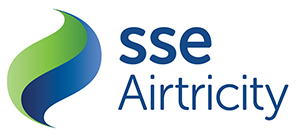SSE’s wind energy powering NI sports development
 SSE’s wind energy powering NI sports development
SSE’s wind energy powering NI sports development
SSE, Northern Ireland’s largest generator and provider of wind power, is also a driving force behind local sports development.

On Sunday 31st May this year, almost 2,000 runners of all ages and abilities converged outside Derry-Londonderry for the third annual SSE Airtricity Walled City Marathon. Runners from across Northern Ireland, the island and the globe put their dawn, daytime and sunset training behind them as they set off across the start line to compete over a stunning 26.2 mile course, taking in all the sights and sounds of the city along the way. The race, which is always a great family spectacle, took the runners through buzzing neighbourhoods and rural villages, along the banks of the River Foyle and over the city’s famous bridges, before finishing in the historic Guildhall Square. For younger ones, there was a one mile SSE Airtricity Kids Mini Marathon for local children aged 9-17. Earlier in the season, there were 10k and 10 mile Challenges to limber up those limbs.
It’s an event that SSE Airtricity, the retail arm of SSE – Northern Ireland’s largest generator and provider of wind power – has been proud to support since its regeneration in 2013 as part of Derry’s packed UK City of Culture calendar of events.
Bronagh Gormley, SSE Airtricity, comments: “At SSE, we believe we have a strong role to play in helping to make a difference in the local communities in which we operate, whether that’s through support for a more sustainable energy infrastructure or through on-the-ground support for local endeavour such as sports development. As the operator of Northern Ireland’s largest wind farm, our 73MW Slieve Kirk Wind Park just outside Derry City, it seemed natural that we would come on board to help revitalise marathon running in the North West through our sponsorship of the all-new Walled City Marathon.
“For many years, marathon enthusiasts from the North West had to travel to Belfast or to cities elsewhere in the UK, in Ireland and beyond to take on a 26-mile marathon challenge. Now, local runners have a hometown event to call their own. We’re really proud of the difference we’ve made by helping to support the local organisers who individually and collectively put so much of their own personal energy into developing the event and running in the region. By harnessing the benefits of our Slieve Kirk Wind Park right beside the city we’ve been able to power the Walled City Marathon from the very start and help repower the resurgence of long distance running locally.”
SSE’s support for the Walled City Marathon is just one example of the significant contribution that the company is making towards sports development in Northern Ireland. Whether it’s sponsorship of sporting events, wind farm community fund contributions to local sporting clubs, or support for Northern Ireland’s next generation of athletes, SSE is proudly making a difference to sport here.
 When it comes to the communities that SSE lives and works in, the company’s first commitment is to ensure it undertakes its activities in a responsible way. But as Aoife Ryan, SSE’s Head of Sustainability explains, SSE wants to go further and be an active contributor to these communities, playing its part as a community partner.
When it comes to the communities that SSE lives and works in, the company’s first commitment is to ensure it undertakes its activities in a responsible way. But as Aoife Ryan, SSE’s Head of Sustainability explains, SSE wants to go further and be an active contributor to these communities, playing its part as a community partner.
“We believe that we need to operate in a way that any other responsible member of the community would. But we also believe in doing more. We know that as one of the largest energy companies in Northern Ireland, and as the largest green energy generator and developer, we have a responsibility to ensure that we give back to the local communities in which we operate. And importantly we need to be delivering an economic and social dividend to the communities in which each of our projects is located.
“Sport, including local sporting events, activities and sports clubs, is one of the most important components of a rich and vibrant community fabric. That’s why we’re proud to play our part in helping to support the development of sport here as part of our ongoing commitment towards being responsible.”
One of the most practical sports development supports that SSE offers is its annual wind farm community funds. Since 2003, SSE Airtricity has pioneered the creation of voluntary community funding to benefit local communities around its existing and future wind farms in counties Tyrone, Londonderry and Fermanagh. To date, the company has contributed over £750,000 from its wind farms to local good causes, making the energy provider one of Northern Ireland’s greenest corporate citizens. Four years ago, the company adjusted the emphasis of its community fund focus to directly support projects targeted at improving the energy efficiency of community buildings and infrastructure, thereby helping to decarbonise local building stock and helping groups to cut their energy use costs in the process.
Under its new structure the company evolved its partnership with communities, including local sports bodies and groups, to begin a programme of annual financial contributions from its wind farms to deliver much-needed infrastructure support. From repairs to clubhouses to energy efficient sports lighting, heated water systems for dressing rooms to insulation for sports halls, SSE Airtricity is supporting initiatives that matter most to local people. In total, just over £400,000 has been awarded by SSE Airtricity to around 100 community-based energy efficiency projects that will benefit sports ranging from Football, Rugby, Cricket, Gaelic Games and Boxing to Horse-riding, Angling, Dancing, Multi-sport, Bowling, and even Clay Pigeon Shooting.
“By sharing value from our wind farms in this way from our Community Fund we’re creating the environment in which real opportunity for the future, whether for the sporting enthusiast, the amateur athlete or the future sports star, can be nurtured through future generations by the local sports administrators and champions in our communities,” Aoife Ryan continues.
This is borne out by one such sporting administrator, Sean Corry, Development Manager at The Two Castles Boxing Club in Newtownstewart. This month the club received yet more funding from SSE’s Community Fund towards repairing a damaged roof. “The boxing club has benefitted greatly from SSE Airtricity’s support over the years. This year’s funding will be used to replace a damaged and leaking roof, ensuring that the heat inside the building won’t escape and our members can train in a comfortable environment.”
It’s from these local sporting communities that our next generation of sporting stars will emerge. At last year’s Commonwealth Games in Glasgow, Northern Ireland returned home triumphant as team members collected the nation’s best Commonwealth Games haul since the 1986 Edinburgh Games, with a total of 12 medals. Of those – two gold, two silver, and five bronze – came from boxing. Belfast’s Michael Conlan – an SSE Next Generation Ambassador – played his part in the team NI’s success by securing boxing Gold in bantamweight and staking his claim to be an Olympic medal hope at Rio 2016.
And that’s just the point of SSE’s Next Generation programme – a four-year partnership with Sports Aid, a charity dedicated to helping young athletes aged from 13 to 25 reach their potential. Each of SSE’s Next Generation athletes has been identified as a potential Olympian or Paralympian medallist of the future.
Aoife Ryan continues: “Building on our Commonwealth Games success, I’m proud to say that here in Northern Ireland we’re getting behind 11 young sports stars of the future by providing real and practical support through our Next Generation programme. This includes funding and mentoring from elite Olympic medal-winning athletes to prepare our Next Generation stars for life as a top athlete, on topics ranging from nutrition and sports psychology to dealing with the media and much more. We also provide practical support to parents and coaches.”
Whether it’s through its role as a sports sponsor, as a partner in funding community sport from wind energy, or by backing our young sports stars of the future, SSE is making a real difference and is helping sporting communities across Northern Ireland to achieve their full potential.
For more on SSE’s business activities in Northern Ireland visit: www.ireland.sse.com





